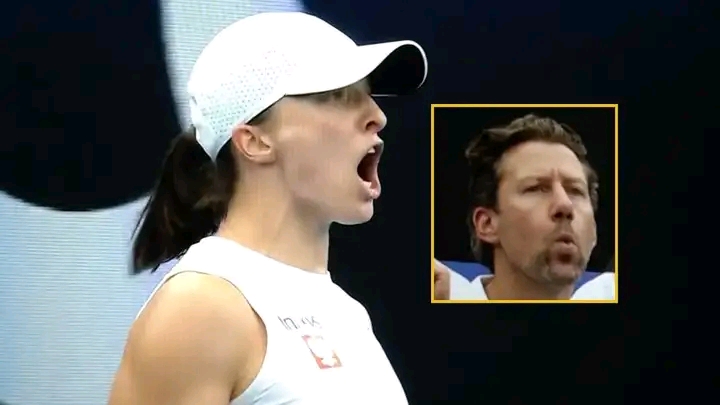Shane Lowry embarrasses himself with comments about setup at….
Shane Lowry’s Controversial
As the 152nd Open Championship unfolded at Royal Troon, it was clear that the unpredictable Scottish weather would play a pivotal role. Heavy winds and relentless rain turned the prestigious course into a formidable challenge, particularly on Saturday. Amidst the chaos, Shane Lowry’s candid remarks about the setup of the back nine stirred up a significant reaction. Let’s delve deeper into the controversy and explore the underlying issues surrounding his comments.
The Gritty Reality of The Open Championship
The Open Championship is renowned for its weather-dependent unpredictability. Unlike other tournaments, players at The Open must contend with the whims of the elements, which can range from gentle breezes to gale-force winds and driving rain. The 152nd Open at Royal Troon lived up to this reputation in spectacular fashion. Players faced a gauntlet of brutal conditions throughout the four-day event, with Saturday proving to be the most grueling.
The intense weather wreaked havoc on the course, transforming it from a challenging but manageable layout into a beast of a test. On this particular Saturday, the weather’s impact was starkly visible. The winds reached up to 20 mph, and the relentless rain turned fairways into marshlands and greens into unyielding surfaces. Players who teed off in the morning experienced far calmer conditions, allowing them to post impressive scores like 65s from Sam Burns and Thriston Lawrence, and a 66 from Russell Henley. By contrast, the afternoon players battled the worsening elements, struggling to reach greens and find their rhythm.
Lowry’s Frustration: A Closer Look
Shane Lowry, a prominent figure in the golfing world, found himself at the center of the controversy with his outspoken criticism of the course setup. After a grueling third round where he posted a 77, Lowry expressed his frustration with the conditions and the setup of the back nine. His comments highlighted the severe disparity in conditions between the morning and afternoon rounds.
Lowry’s remarks were direct: “It was a grind. It wasn’t much fun. Driver, driver into 15. 16 playing ridiculously long. Driver into 17. Then you’re standing on the 18th tee wondering if you can actually hit the fairway, if you can reach the fairway, and it’s 230-yards to the fairway. Bear in mind my driver pitched about 220-yards on the 17th hole. So, yeah, it’s not much fun out there. It’s obviously very difficult. But you’d have to question why there wasn’t a couple of tees put forward today, to be honest. I think 15 and 17 – like 15 is 500-yards playing into that wind.”
Unpacking the Criticism
To fully understand Lowry’s criticism, it’s essential to consider several factors. Firstly, the nature of the weather conditions at The Open is entirely out of anyone’s control. Players, caddies, and officials alike are at the mercy of the weather. The R&A, organizers of the Open Championship, cannot influence the wind or rain. They set up the course with the conditions they are given, and this year, those conditions were particularly severe.
Lowry’s frustration with the setup of the course raises valid points about the disparity in conditions faced by different groups. Morning players had a significant advantage with more favorable weather, while afternoon groups endured harsher conditions. However, this is a common occurrence at The Open, where the challenge is not only the course but also the elements.
The Role of Par and Player Expectations
Lowry’s comments also touch on an underlying issue with the concept of par. While par provides a benchmark for assessing a golfer’s performance, it can sometimes skew perceptions of fairness. The objective at The Open is to score fewer strokes than the competitors, not necessarily to make par on every hole. The changing conditions on the back nine were certainly challenging, but they were part of the same course for everyone.
The idea of changing the par for certain holes, while hypothetical, illustrates how adjusting expectations might impact player perceptions. If Royal Troon’s par fours were considered par fives on such a day, it could alter how players and fans view the difficulty of the course. Ultimately, though, players are judged on their ability to outperform their peers under the prevailing conditions, regardless of par.
The Context of Success and Adaptation
Despite the challenging conditions, some players managed to excel. Xander Schauffele and Billy Horschel both posted impressive scores of 69, while Justin Rose and Scottie Scheffler navigated the difficult conditions admirably. Scheffler’s birdie on the par-three 17th, achieved with a remarkable three-wood shot, was a standout moment of the tournament. These performances underscore that while the weather and setup posed significant challenges, success is still attainable with skill and adaptability.
Lowry’s frustration is understandable, given the severe conditions he faced. However, the context of The Open Championship—where players must adapt to ever-changing conditions—should also be considered. While it’s natural to critique the setup and conditions, the essence of the tournament remains a test of resilience and skill against the elements.
In conclusion, Shane Lowry’s comments reflect the intense pressure and challenges faced during the 152nd Open Championship. While the weather and course setup undeniably played a role in the difficulties encountered, they also highlight the broader challenge of competing in such a prestigious and unpredictable event.






